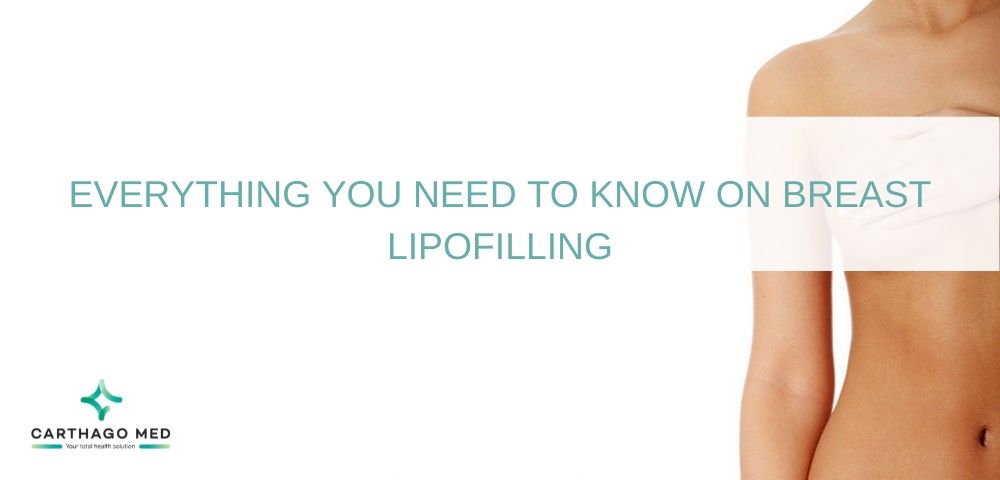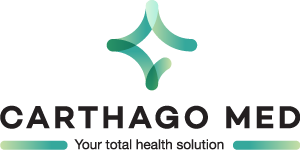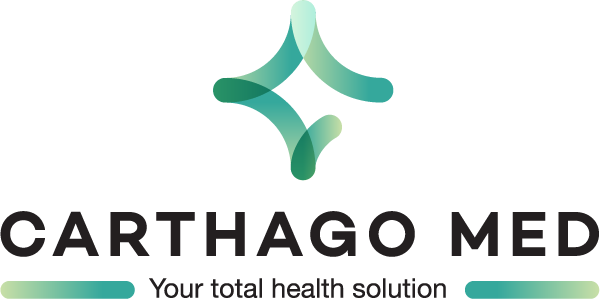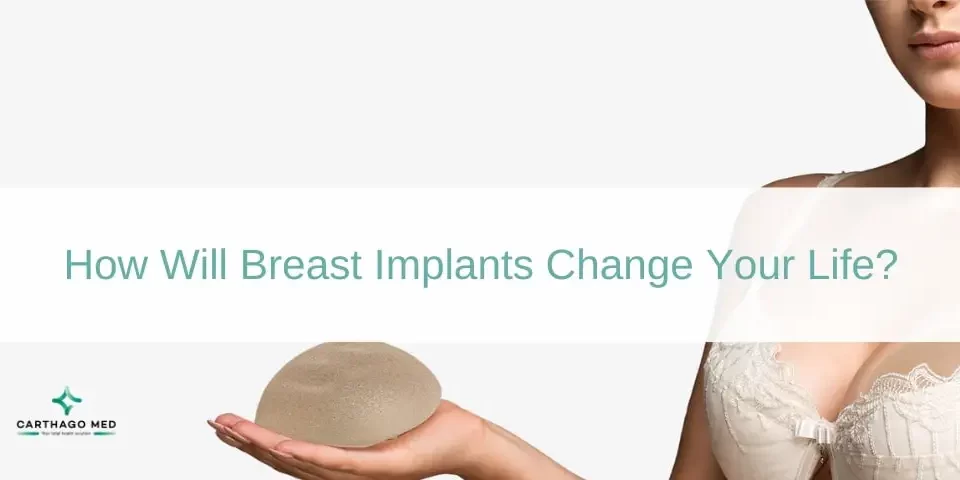
Everything you need to know on breast lipofilling
Breast augmentation presents the ideal solution for women who suffer from breast atrophy or have naturally small or underdeveloped breasts.
The procedure aims at remodelling the breasts by enhancing their size and altering their shape; either through the insertion of breast implants or through lipofilling (also known as fat grafting or fat transfer).
While the former is believed to offer extravagant results, the latter is a more natural alternative as it uses the patient’s own body fat to augment the size of the breasts.
Given the latter, breast lipofilling has gained tremendous fame nowadays to become one of the most requested and performed breast surgeries worldwide.
What is fat transfer breast augmentation?
Cosmetic surgery provides numerous options for individuals seeking to enhance their appearance, and fat transfer breast augmentation is one innovative technique in this field. Also known as breast lipofilling, this procedure involves transferring fat from one area of the body, typically the abdomen or thighs, to the breasts to increase their volume and achieve a natural-looking enhancement. Unlike traditional breast implants, fat transfer breast augmentation uses the patient's own fat cells, making it a safer and more natural alternative. This method not only enhances breast size but also allows for body contouring in the donor areas, resulting in a more sculpted overall appearance. Patients often choose this procedure for its natural results, minimal scarring, and reduced risk of complications associated with foreign materials. Fat transfer breast augmentation is a popular choice for individuals looking to enhance their breasts while achieving a more harmonious and balanced body contour.
Benefits Of A Fat Transfer Breast Augmentation
A fat transfer breast augmentation offers several advantages for those considering breast enhancement. Unlike traditional implants, this procedure uses the patient's own fat harvested from other areas of the body, such as the abdomen or thighs, to enhance breast volume and shape. This natural approach not only avoids the use of synthetic implants but also allows for a more natural-looking and feeling outcome. Additionally, fat transfer breast augmentation can provide dual benefits by contouring donor sites through liposuction, resulting in a slimmer overall appearance. Furthermore, because the procedure uses the patient's own tissue, there is a reduced risk of complications such as capsular contracture or implant rupture. Patients often appreciate the potential for more subtle and personalized results that age more naturally over time.
Potential Side Effects Of A Fat Transfer Breast Augmentation
Like any surgical procedure, fat transfer breast augmentation can have potential side effects. Common side effects include temporary swelling and bruising at both the donor and recipient sites, which typically diminish over time. Mild to moderate discomfort may also be experienced, usually managed effectively with prescribed pain relievers by the surgeon. Less frequent complications may include partial absorption of the injected fat, occasionally requiring additional procedures to optimize results. Additionally, although rare, there is a risk of developing fatty cysts or calcifications in the breasts, which may necessitate medical follow-up. It's crucial for patients to thoroughly discuss potential risks with their plastic surgeon during the initial consultation and to carefully follow post-operative instructions to minimize these risks and ensure optimal recovery.
How To Prepare For A Fat Transfer Breast Augmentation
Preparing for a fat transfer breast augmentation involves several steps to ensure optimal results and minimize risks. Initially, it is essential to schedule a thorough consultation with a qualified plastic surgeon specializing in this technique. During this consultation, the surgeon will assess your candidacy, discuss your goals, and explain the procedure in detail. To enhance the success of the procedure, patients are typically advised to maintain a stable weight and refrain from smoking, as smoking can interfere with healing. Additionally, the surgeon may recommend certain pre-operative measures, such as adjusting medications or supplements that could affect bleeding or healing. It's also crucial to arrange for someone to drive you home after the procedure and to have a support system in place for the initial recovery period.
What To Expect During A Fat Transfer Breast Augmentation
During a fat transfer breast augmentation, the procedure typically begins with liposuction to harvest fat from donor areas like the abdomen, thighs, or buttocks. This fat is then processed and purified before being injected strategically into the breasts to achieve the desired volume and shape. The entire process is performed under anesthesia to ensure patient comfort. After the procedure, patients can expect some swelling, bruising, and discomfort in both the donor and recipient areas, which can be managed with prescribed pain medications and compression garments. While initial results may appear swollen or exaggerated, the breasts will gradually settle into a more natural shape over the following weeks as swelling subsides. Patients are advised to follow post-operative instructions carefully, including avoiding strenuous activities and wearing supportive bras as directed, to optimize healing and achieve the best possible outcome.
Who should not get a fat transfer breast augmentation?
Fat transfer breast augmentation, while a popular and relatively safe procedure, may not be suitable for everyone. Certain individuals should avoid this surgery to ensure their safety and achieve optimal results. Patients who do not have enough excess fat in donor areas like the abdomen or thighs may not be ideal candidates, as there might not be sufficient fat available for the transfer. Additionally, individuals with a history of breast cancer or certain medical conditions, such as autoimmune diseases or certain skin disorders, may be advised against fat transfer breast augmentation due to potential complications. It is essential for those who smoke or have poor overall health to reconsider this procedure, as these factors can impair the healing process and increase the risk of complications. Furthermore, individuals with unrealistic expectations or those seeking dramatic changes in breast size may not be suitable candidates for fat transfer breast augmentation. It is crucial for patients to have a thorough consultation with a qualified plastic surgeon who can assess their candidacy based on their medical history, body composition, and aesthetic goals to determine if this procedure is the right choice for them.
What happens during a fat transfer breast augmentation?
During a fat transfer breast augmentation procedure, the patient undergoes a multi-step process designed to enhance their breast size and shape using their body's own fat cells. The surgery typically begins with the administration of anesthesia to ensure the patient's comfort throughout the procedure. Once the patient is sedated, the plastic surgeon performs liposuction to extract excess fat from predetermined donor areas such as the abdomen, thighs, or hips. The harvested fat is then carefully processed and purified to remove impurities and damaged cells.
After the fat is prepared, the surgeon meticulously injects it into specific areas of the breasts, strategically shaping and contouring to achieve the desired volume and symmetry. The injection process involves small, inconspicuous incisions, minimizing the risk of visible scarring. The surgeon pays close attention to detail, ensuring an even distribution of fat cells for a natural and harmonious result.
How long does a fat transfer breast augmentation last?
The longevity of the results from a fat transfer breast augmentation can vary from person to person. While the procedure offers a natural and long-lasting enhancement, it's important to understand that not all transferred fat cells survive in their new location. Typically, a portion of the transferred fat is naturally reabsorbed by the body during the initial healing period. The fat cells that successfully integrate into the breast tissue, however, tend to remain there for the long term.
With advancements in surgical techniques and technology, the survival rate of transferred fat has improved, leading to more predictable and enduring results. Many patients can enjoy the benefits of their fat transfer breast augmentation for several years, if not indefinitely, especially if they maintain a stable weight and a healthy lifestyle. It's important to note that fluctuations in body weight can impact the results, so maintaining a consistent weight can contribute to the longevity of the enhancement.
What are the Advantages of Breast Lipofilling?
Since breast lipofilling uses fat harvested from natural fat deposits like the abdomen, the buttocks, the hips, etc., risks of rejection or contra-indications to the surgery are minimal. In addition, post-surgical contra-indications pertaining to breast-feeding or pregnancy are nearly inexistent.
With breast lipofilling, post-surgical scars are minor since the cannulas used to suck excess fat and then reinject it into the breasts are very thin. The shape, size and feeling of the breasts also remain natural.
Breast lipofilling: when and for whom?
Breast lipofilling, in contrast to implant placement, has specific indications tailored to certain patients. This procedure is suitable for individuals who have no history or risks of breast cancer following a negative breast radiological examination. Ideal candidates possess an adequate fat supply and maintain a stable weight since the reintroduced fat cells adapt to the body's fluctuations. Additionally, those seeking a modest increase in breast volume, typically not exceeding 200-250 cc per session (equivalent to two cups), find lipofilling suitable. This natural method is chosen by individuals desiring subtle breast remodeling, minor breast ptosis correction, or symmetry improvement through fat injection into the smaller breast. Moreover, breast lipofilling serves those looking to enhance the outcomes of previous breast reconstruction surgeries or augmentations with implants.
What are the Results of a fat transfer breast augmentation?
The results of a fat transfer breast augmentation can be transformative, providing patients with a natural and harmonious enhancement. One of the primary benefits of this procedure is the use of the body's own fat cells, leading to a more natural look and feel compared to traditional breast implants. By utilizing fat from areas where the patient desires contouring, such as the abdomen or thighs, the procedure offers the dual advantage of enhancing the breasts while sculpting other areas of the body.
Patients often experience increased breast volume and improved breast shape, leading to enhanced self-confidence and body image. The results are typically subtle and natural-looking, avoiding the overly round or firm appearance associated with some breast implants. Additionally, because the procedure uses the patient's own tissue, there is a reduced risk of complications and allergic reactions that can occur with synthetic implants.









